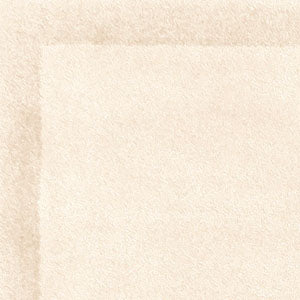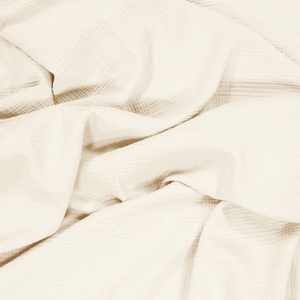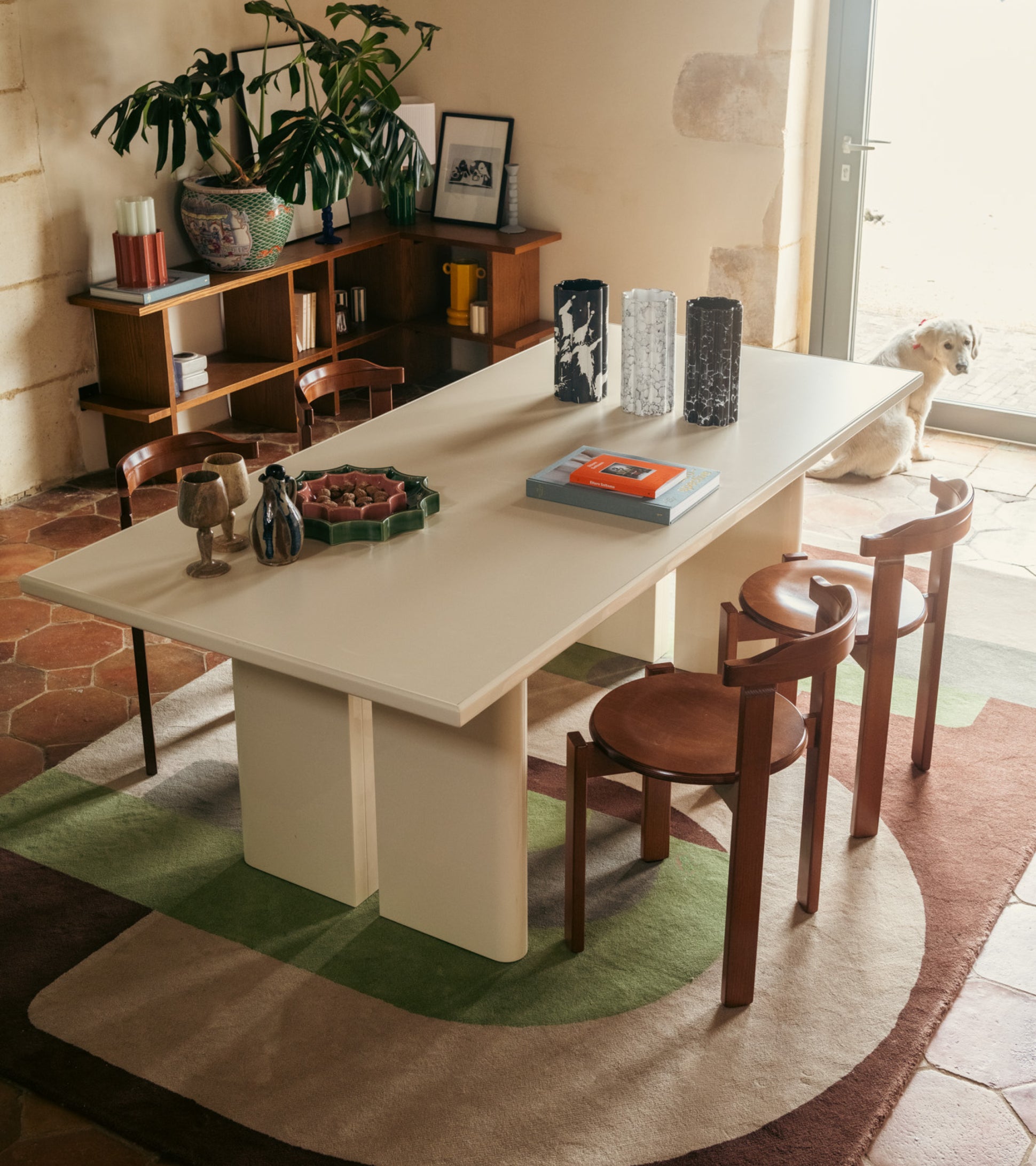Inspiration
Tuba, Friend’s House
There is only one step from dream to reality! Tuba is the perfect example of that. A childhood dream, that of Greg Gassa and Fabrice Denizot, has become the dream of adults: a fisherman’s cottage turned into a festive retreat where friends can meet. For this first joint project, the two natives of the Phocaean city had the incredible opportunity to invest in a building just a stone’s throw from the village of Les Goudes. A somewhat tired diving club that in the past has seen Jacques Maillol and Falco, whose rehabilitation the duo hastened to entrust to their long-time accomplice, the interior architect and designer Marion Mailaender. Expert hands, combined with a wild imagination and energy. A common vision, that of simplicity, confirmed by a unique geography and a wild nature steeped in history. A dream come true for this dilapidated building. Now transformed into an immaculate restaurant and bar with a few ship cabin-style rooms, Tuba embodies the essence of the summer spirit. An establishment with a free and joyful atmosphere that recalls the customs of the Marseille of its founders’ childhood – that of the 1980s-1990s – but also those of their friends and families, who came in turn to contribute in their own way to the building. Delphine André, architect DPLG, Emmanuelle Luciani and the artists of the Pavillon Southway, Thomas Mailaender (husband of), Laetitia Toulouse and the MEWS agency: so many good people who have taken an interest in Tuba, its mottled rooms and its lime walls, which are ideally integrated into the surrounding landscape. One point – respect for the environment – is more important to the two founders than anything else. Because if Tuba combines gastronomic and visual pleasure, eco-responsibility is not forgotten because of the close relationship the boys have with the sea. A cause that is dear to their hearts and for which they do not hesitate to get involved in order to make their customers as aware of the issues as possible.
Tuba – Cabanons and restaurant. 2, boulevard Alexandre Delabre – 13008 Marseille. Reservations by phone on 09 66 95 13 16 from Monday to Wednesday, 9am to 5pm and 7pm to 9pm. Thursday to Friday from 12pm to 2.30pm and from 7pm to 9.30pm. Weekends from 12pm to 3pm and from 7pm to 9pm.
Author
Caroline Balvay
Photos and videos
Valerio Geraci
TSF
Marion, Fabrice, Greg: can you introduce yourselves, please?
Marion
I am Marion Mailaender, an interior architect and designer. Born in Marseille, I went to Paris to study at the Ecole Boulle, and I stayed there to set up my own agency almost 15 years ago.
Fabrice
I’m Fabrice Denizot, film producer and co-founder of Tuba. I don’t know if I can be as brief as Marion! I was born in Aubagne and moved to Australia at the age of 8 with my parents. Through my travels, I have developed an uncontrollable desire for travel, adventure and meeting people. As an only child, I often immersed myself in the cinema. A pastime that has become a passion! After narrowly missing out on going to La Fémis, Manou – my girlfriend at the time and now my wife – introduced me to my mentor, Hubert Herr, a top US film distributor. Thanks to him, I gained 10 years. He chose me to succeed him and trained me. At the age of 25, I became a regional manager for Universal Studios, Paramount, MGM and Dreamworks. I rose through the ranks to finish my career at Paramount Pictures France as Distribution Director, also in charge of co-productions. After 20 years of exile, I felt like moving back to the south and becoming an independent producer. The hotel business, from what I can tell today despite my very short experience, is a bit like producing a film: you find the subject (the location), the director (the architect), the star of the show (the interior designer) and then all the technical teams. And the project comes to life from a blank page!
Greg
I’m Greg Gassa, entrepreneur and co-founder of Tuba. Born in Marseille, I went to the hotel school in Lausanne and then travelled between Asia, the United States, Paris and London for about twenty years. During that period, I moved between fashion – founding the UNITY brand – and the restaurant business, before returning to Marseille in 2015 and setting up various restaurants, which I sold in 2019 to focus on launching Tuba.
TSF
How do two pals who have wanted to work together for a long time manage to put this desire into practice?
Fabrice
Greg and I have known each other for a long time, but we got together through Marion and Thomas Mailaender. Coming to the genesis of the Tuba adventure, I always wanted to have a place “of my own”. Even a little bar for getting together with our friends. A simple, honest, cool place. The idea tickled me. I told Greg and even some other friends about it. The only thing that mattered was proximity to the sea. I had missed it so much. I wanted to see it every day. The sea, in Marseille, is first and foremost the promise of wild nature, but it also represents the nostalgia of childhood, a lost paradise. Contemplation. A sense of eternity. When I was told about this building for sale on the edge of the village of Les Goudes, I immediately spoke to Greg, and he reacted at once. He told me to go for it. The spot was so crazy. We said to ourselves, “even if it doesn’t work, we’ll keep it for ourselves”.
Greg
Quite easily, in fact, the spot was the trigger. A shared vision, the desire to to make a crazy place, and we went for it!
TSF
Did the idea of a “companionable cabin” come to you at once?
Fabrice
We had imagined something summery and white. Then I realised the technical constraints imposed by the extreme exposure to the elements, and it was Marion who directed the project towards the local culture, and the traditional cabins, the ‘cabanon de Calanque’. She always tries to respect the history of the place.
Marion
The cabin, or “cabanon”, atmosphere was imposed by the geography of the place, on a rock, next to other traditional cabins. We looked at the architecture around us for inspiration and took a contemporary look at it. I have always had a passion for the vernacular, for architecture without an architect, with its imperfections, its quirks – that’s what makes up the charm of these places.
Greg
Above all, Tuba had to be part of the history of Les Goudes and the history of the diving club. Marion’s talent combined with our artistic vision and energy did the rest.
TSF
How did you divide the roles within Tuba?
Fabrice
I often say, ‘I gave birth to Tuba, and Greg brought it to life’. I found the premises, managed the work, and Greg takes care of the operational side. Even if the reality is a bit different! There is mobility at all levels. Tuba is a huge team effort, a combination of energies. For the decoration and artistic direction, we decided to give Marion Mailaender a completely free hand! The name, “Tuba”, for example, is her! She also supervises the graphic design in conjunction with the Flirt Studio teams. I am always giving my opinion on operations, playing the role of an ultra-demanding customer. Delphine André, architect DPLG, has been a tremendous help to Marion. Emmanuelle Luciani and her team from Southway Studio worked on the fresco at the entrance and some other decorative details. Thomas Mailaender also helped us a lot, and he is now in charge of the artists’ residency – and often gives us his feedback on the menu! My wife Manou is in charge of everything related to well-being and yoga classes. And let’s not forget the Mews team, led by Laetitia Toulouse, who managed the launch with a deft hand.
Greg
The roles were shared out naturally, as everyone has specific skills. I worked during the winter with my collaborator Zoé to recruit the best possible staff for this season; I gave them guidelines in the kitchen by working with chef Antoine Teychene, alongside local artisans and producers. All this preparatory work has enabled us to assert Tuba’s personality even more firmly.
TSF
Friends, family, craftspeople: who has worked with you throughout this project?
Marion
Everyone played their part and got involved in the project. The craftspeople have been great. To be able to complete such a project in the middle of a lockdown was a massive achievement! For 10 days before the opening, we were on site 24 hours a day. Friends came to help screw the tables together and plant the rosemary, and some brought us dinner. We were exhausted, but it was a great atmosphere!
Fabrice
That’s exactly it. We did it all as a family!
TSF
What have you kept from this former diving centre?
Marion
The old diving centre was almost abandoned and badly damaged by storms. The architect Delphine Andrée helped us to open up views to the sea while, at the same time, preserving the coastline. She did it very well, because it’s very difficult to create this type of establishment in the Calanques National Park. What remains is above all the view and the staircase at the end, which literally “plunges” into Tuba. (laughs)
Fabrice
Tuba is the architectural expression of its proximity to the elements. A reflection arising from experience gained after a few years of living in this harsh environment. We had to avoid scrap metal at all costs, which rusts instantly, and plaster, which melts like snow in the sunshine. Empirically, we understood that the only things that last here are stone or stainless steel. Sometimes, being at Tuba is like being on a boat. Except that when we get four-metre waves (in a big storm), it’s impossible to get back to port! It is one of the closest buildings in Marseille to the sea. We only had to look around to find what seemed to stand up best: the wall overlooking the harbour, stones, concrete. And the white painted wooden boats, which have been in the water for 70 years! This is how Tuba’s ‘materials code’ was born. Local calanque-coloured stone and white painted wood cladding. Apart from that, we fought like crazy to keep the bar as it was. And we succeeded! It was here that Jacques Maillol drank a toast with Albert Falco. The guest tables are also from the former diving club. We also kept a real rubber snorkel (all dry) from the 1970s. The kind that will ruin your gums! It stands proudly on the counter. We also wanted to keep the diving activities, which will be organised for the beginning of this summer.
TSF
Marion, how did you reclaim this history and this feeling that swings between simplicity and authenticity in decoration?
Marion
The name, Tuba, was already established at the beginning of the project and set the tone. As I said, I love to observe the surroundings of a place before drawing anything. And I know the cabanon atmosphere well because I grew up in Marseille. I recalled all my childhood memories: eating ice cream at the natural cane counter, walking barefoot on the cool stone, climbing down the ladder onto the rocks for a swim, and so on. All three of us had a genuine desire for simplicity. We used as many natural materials as possible, like the lime walls that we acquired from the last company that makes them in the region – at the foot of the Gineste – and the natural rope skirting boards that I had seen in the traditional cabanons at Sormiou. And we tried to buy as little as possible for the decoration. We bargain hunted, repainted and repaired a lot of things. And we worked with local artists and craftspeople like Emmanuelle Luciani of Southway Studio. I remember at the beginning I said, “let’s do something very simple, let’s shower with a yellow hose to rinse the wetsuits,” and it was Fabrice who fought with the plumber to get it done in the bathrooms.
TSF
You also created some elements with your husband, the artist Thomas Mailaender. Please tell us more!
Marion
During the lockdown, we were in the Alps, and we had time. So we made and carved the tables for the small lounge, engraving them with palms and octopuses. We also hunted down all the lamps from the mountain and quite a few decorative items. Thomas found an entire archive of vintage stickers on the theme of the sea and diving. They’re now stuck on the double door of the bar. We also created my own brand of upcycled tableware for the occasion, 04.9. We make collages of images with quirky pop feel on found plates.
TSF
The Marseille of the 1980s-1990s, but also the aesthetics of these periods, are reflected in small touches everywhere from the dining room to the sleeping quarters. Why?
Marion
Because it’s our whole childhood. The photo of Jean Pierre Papin or the book How to make your own windsurfer – I had them in my bedroom. And also because it’s funny, offbeat once again.
TSF
The view of the Mediterranean is breathtaking. What is your relationship with the sea, and, in particular, how do you make your customers aware of this from day to day?
Fabrice
I personally have a symbiotic relationship with the sea… A compulsive need to to dive in every day and to confront its brute force. Last summer, I did the Corsica from St-Tropez by windsurfer. A long-standing dream. A single edge. Madness. In winter, my group of swimming friends and I, we jump from the calanque into the icy water with our wetsuits on our backs, and we swim to the Maronnaise or the “Baie des Singes”. By swimming in the calanques, we have been forced to witness the increasing underwater pollution. And we have decided to take practical action. We offer to give our customers a rubbish bag when they go swimming to collect the floating rubbish. If they bring in 5 pieces of rubbish, we give them a drink. It’s our way of encouraging people to take care of the sea. On a grander scale, we organise litter picks on land and in the sea in Les Goudes and the surrounding area. In May, with the help of several partners, including the Levantin, Cafés Luciani, Pernod Ricard and Ludo Savariello, and, above all, by mobilising fifty or so friends, we collected no less than 500 kilos of rubbish from an area of around 1,000 m2. It’s quite frightening. It gave us an idea of the extent of the work that remains to be done, both in terms of action and awareness-raising.
Greg
We have put in place an eco-friendly policy for Tuba, for the work, the kitchen, the bar, and the customers. This policy is proudly displayed in every room, and our guests are kindly invited to adhere to it!
TSF
In addition to having five rooms, Tuba is also a bar and restaurant. What will we find on the menu?
Greg
Mostly products from the Mediterranean basin. We wanted a menu accessible, understandable and above all of high quality: Cerdic Casanova olive oils, which we think are the best, organic bass from Friuli, vegetables from the farmers close by. All this is put together by our crazy team in the kitchen.
TSF
Tuba is a top summer destination, but how do you keep it going the other half of the year?
Greg
It’s not hibernation, but we go into a kind of winter sleep mode at Tuba. From 90 covers per shift, 7 days a week, to 40 covers 3.5 days a week. It’s a time for us to test new suppliers, experiment in the kitchen, give the teams a break and enjoy Tuba in a completely different way from the excitement of summer. This year we will take advantage of the season to develop our private and professional events activities, yoga retreats, photo and film shoots.
Tuba is the architectural expression of its proximity to the elements. A reflection arising from experience gained after a few years of living in this harsh environment.
)
)
)
)
)
)
)
)
)
)
)
)
)
)
)
)
)
)
)
)
)
)
)
)
)
)
)
)
)
)
)




















